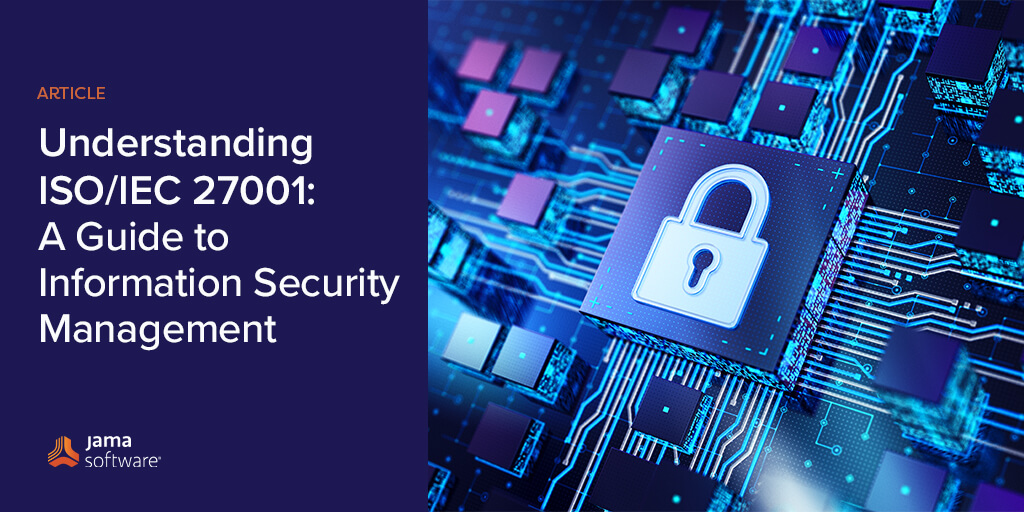Understanding ISO/IEC 27001: A Guide to Information Security Management
In today’s interconnected world, the importance of securing sensitive information cannot be overstated. Organizations face numerous threats to their information assets, ranging from cyberattacks to data breaches. To address these challenges, many businesses turn to internationally recognized standards for information security management, with ISO/IEC 27001 standing out as a cornerstone in this field.
RELATED: A Guide to Understanding ISO Standards
Overview of ISO/IEC 27001:
ISO/IEC 27001 is a globally recognized standard that provides a systematic approach to managing sensitive information, ensuring the confidentiality, integrity, and availability of data within an organization. Developed by the International Organization for Standardization (ISO) and the International Electrotechnical Commission (IEC), this standard outlines best practices for establishing, implementing, maintaining, and continually improving an Information Security Management System (ISMS).
Key Principles:
- Risk Management: ISO/IEC 27001 is fundamentally built on the concept of risk management. Organizations are required to identify and assess information security risks, implement controls to mitigate those risks, and continuously monitor and review the effectiveness of these controls.
- PDCA Cycle: The Plan-Do-Check-Act (PDCA) cycle is at the core of ISO/IEC 27001. Organizations plan their ISMS, implement the plan, check its effectiveness through monitoring and measurement, and act to continually improve the system.
Scope and Requirements:
- Scope Definition: Organizations must clearly define the scope of their ISMS, specifying the boundaries and applicability of the standard within their operations.
- Risk Assessment: A comprehensive risk assessment is a critical component. This involves identifying assets, evaluating vulnerabilities and threats, and determining the potential impact of information security incidents.
- Control Objectives and Controls: ISO/IEC 27001 provides an Annex A, which includes a set of control objectives and controls covering various aspects of information security, such as access control, cryptography, and incident management. Organizations choose and implement controls based on their specific risk profile.
Implementation Process:
- Leadership and Commitment: Senior management plays a crucial role in the successful implementation of ISO/IEC 27001. Leadership commitment ensures that information security is integrated into the organization’s culture and business processes.
- Documentation: Proper documentation is essential to demonstrate compliance with the standard. This includes the Information Security Policy, risk assessment reports, and records of monitoring and measurement activities.
- Training and Awareness: Employees need to be aware of their role in maintaining information security. Organizations should provide training programs to enhance the awareness and competence of personnel.
Certification Process:
- Third-Party Certification: Organizations can undergo a certification process conducted by accredited certification bodies to validate their compliance with ISO/IEC 27001. This certification provides assurance to stakeholders, customers, and partners that the organization has implemented a robust ISMS.
Benefits of ISO/IEC 27001:
- Risk Reduction: By identifying and addressing potential risks, organizations can significantly reduce the likelihood of security incidents.
- Enhanced Reputation: ISO/IEC 27001 certification enhances an organization’s reputation, demonstrating a commitment to information security best practices.
- Legal and Regulatory Compliance: Adherence to ISO/IEC 27001 helps organizations comply with various legal and regulatory requirements related to information security.
- Competitive Advantage: Certification can be a differentiator in the marketplace, giving organizations a competitive edge by assuring customers of their commitment to information security.
Continual Improvement:
- Monitoring and Review: Regular monitoring and review of the ISMS ensure its ongoing effectiveness. This includes conducting internal audits and management reviews to identify areas for improvement.
- Feedback Loop: ISO/IEC 27001 emphasizes the importance of feedback mechanisms, ensuring that lessons learned from incidents or changes in the business environment are incorporated into the ISMS.
RELATED: Best Practices Guide to Requirements & Requirements Management
Conclusion
ISO/IEC 27001 provides a robust framework for organizations to establish and maintain an effective Information Security Management System. By adopting this standard, businesses can mitigate risks, enhance their reputation, and demonstrate a commitment to safeguarding sensitive information in an ever-evolving digital landscape. As information security continues to be a top priority, ISO/IEC 27001 remains a valuable tool for organizations seeking a comprehensive and internationally recognized approach to managing information security.
Note: This article was drafted with the aid of AI. Additional content, edits for accuracy, and industry expertise by Matti Gray, Mandi Walker, and McKenzie Jonsson.
- Navigating AI Safety with ISO 8800 in Road Vehicles - August 7, 2025
- Automotive Industry Signs Memorandum of Understanding - July 15, 2025
- Construction’s Next Leap: AI as a Strategic Partner - June 26, 2025
